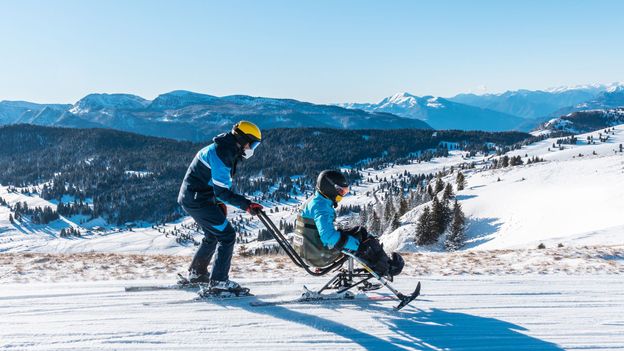January 17, 2024
By Robin Catalano, Features Reporter
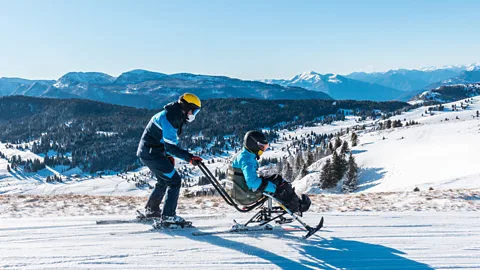 M Gobber/Trentino for All
M Gobber/Trentino for All
The Alpe Cimbula ski resort in Trentino, Italy, is part of the comprehensive Trentino for All initiative (Photo by M. Gobber/Trentino for All)
Around the world, some destinations have recognized that tourists with disabilities are a major underserved demographic and are adapting their business plans to accommodate them.
A few hours had passed since Julie Laramé and her family arrived at Promenade Park in Fort Wayne, Indiana, when her 7-year-old son, Vine, who was born with spina bifida and is wheelchair-bound, was still playing on the splash pad with other kids.
The experience was exactly what she had hoped for when she planned the family trip, and she chose the destination specifically so that Vine could access disability-friendly attractions. Visits to other recreational areas were usually brief, as most facilities have limited accessibility for people with disabilities. However, Promenade Park has many disability-friendly features and has also won several awards for inclusive design.
“This is a minority that anyone in the world can be a part of at any moment in their life,” says Patty Hayes, CEO of the AWS Foundation, a disability inclusion group based in Fort Wayne, Ind. “We’ll probably all be part of this minority at some point in our lives.”
In addition to Promenade Park, Fort Wayne has also invested in several other accessibility schemes over the years, with city leaders focusing on upgrading other tourist attractions, including a $120 million (£94 million) renovation focused on making the airport, built in 1941, accessible. The renovation includes wheelchair-accessible counters, family toilets, rattan walkways and an FM loop for flight announcements.
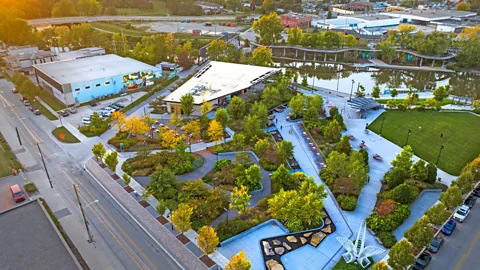 John McGauley of the Fort Wayne Convention and Visitors Bureau
John McGauley of the Fort Wayne Convention and Visitors Bureau
Promenade Park in Fort Wayne, Indiana, USA, is one of the attractions that is accessible to travelers with disabilities. (Photo by John McGauley, courtesy of Fort Wayne Convention and Visitors Bureau)
Around the world, many destinations are investing heavily in accessible attractions and programs, and they are poised to reach underserved traveller communities and reap the economic benefits by joining the social movement towards inclusion.
“Travelers with disabilities are a $58 billion industry, so it has a huge impact on business,” said Brooke Hansen, an associate professor at the University of South Florida’s MUMA College of Business and an expert on sustainable tourism.
Addressing the range of impairments
Disability-friendly facilities and experiences have been around for nearly 30 years, roughly contemporaneous with the introduction of the Americans with Disabilities Act and European Accessibility Act. However, prior to the past decade, wheelchair-accessible ramps and elevators were the norm. Along with social movements calling for greater inclusion, destinations have also recognized the business potential of accessible tourism.
“Maybe 10 years ago it was a little too early. [for these kinds of programmes]”Now everyone, especially our community, wants to welcome people with different needs,” says Stefania Clemente, project manager at Trentino for All, an organization that organizes inclusive programs in Trentino, Italy.
 Polla/Trentino for everyone
Polla/Trentino for everyone
Trentino’s open-air music festival “Sound of the Dolomites (I Suoni delle Dolomiti)” is upgraded for the hearing impaired (Photo: A Polla/Trentino for All)
Although Trentino is not as tourist-heavy as Tuscany or Sicily, it already has a lot to offer visitors: fine dining, mountain scenery, winter sports, medieval castles, etc. Trentino for All aims to ensure that as many people as possible can enjoy the region’s experience, while at the same time creating a popular, revenue-generating destination for inclusive tourism.
Trentino for All has received a $1.2 million (£950,000) grant from the Italian Ministry for Persons with Disabilities to attract tourists to this relatively quiet region of Italy. The initiative aims to create experiences for people with mobility challenges, blindness or visual impairments, and hearing and cognitive disabilities. The organisation is currently upgrading its 30-year-old outdoor concert series, Sound of the Dolomites, to make it the first outdoor music festival to loan hearing-impaired concert-goers a rucksack-like device made by electronics maker Subpac that vibrates in time with the music.
So far, the organization has invested about half of the grant money into adaptation activities, such as creating an accessible website and communications programs, and skiing and mountain biking, Clemente said. The next phase will focus on comprehensive upgrades to accommodations and preparing the area to host some of the 2026 Olympic and Paralympic events.
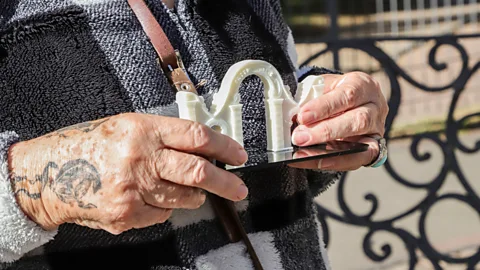 Curitiba City Hall
Curitiba City Hall
The city of Curitiba, capital of the southern Brazilian state of Paraná, has created 3D printed plastic miniatures to help travelers. (Photo courtesy of Curitiba City Hall)
Clemente says making Trentino an accessible and inclusive tourist destination is an ongoing process that will continue even after government funding dries up and the Olympics leave the city.
Tatiana Tura-Corman, tourism director for Curitiba, the capital of the southern Brazilian state of Paraná, says not all projects need to be expensive to be effective. The city has made it a priority to provide tourism experiences for people with a range of disabilities, focusing primarily on programs for people with visual and cognitive disabilities. This year, the agency produced 3D-printed plastic miniatures of the city’s tourist attractions that visually impaired people can carry in tote bags during guided tours and touch to better understand the scale and shape of the different buildings. Tura-Corman says the miniatures were printed “almost free” in a public craft space with the help of students.
So far, $4m (£3.2m) has been spent on inclusive projects: the city’s main botanical gardens feature a “sensation garden” for the visually impaired, with Braille signs and plants to explore by touch, while the Oscar Niemeyer Museum, the largest art museum in Latin America, has achieved 100% accessibility targets, with ramps, audio guides, Braille signs and quiet rooms for people with autism and sensory impairments.
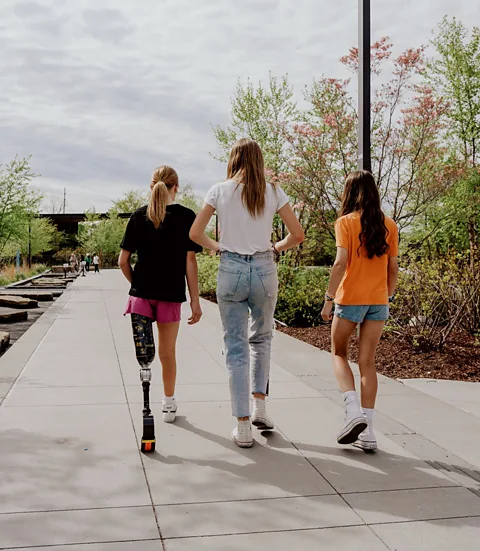 Luke Menard, Visiting Fort Wayne
Luke Menard, Visiting Fort Wayne
Fort Wayne has invested in several accessible attractions around the city to attract travelers with disabilities. (Photo by Luke Menard of the Fort Wayne Tourism Bureau)
Make upgrades that increase revenue
The social benefits of accessible tourism are a given, says Laurent Roffé, president of Accessio Consulting, a California-based consulting service on accessible travel programs, and they’re often what destination managers point to when discussing upgrading, rather than revenue figures.
But even if it doesn’t make the biggest splash, the business potential can’t be ignored.
“You don’t have to convince anyone anymore,” Roffé says. “It’s become part of the mainstream. Debate is a business now. [destinations] Companies that adopt it are doing so for economic gain.”
Lofy points to two studies reviewed by the Open Doors Organisation, an Illinois-based disability services group in the US. In 2015, the market for disabled travellers was worth $35bn (£27.4bn). In 2020, that number grew by 63%. By 2023, Lofy says the industry is on track to break through the $60bn (£47bn) mark. Based on these trends and research he has done with the disabled business traveller community, Lofy predicts revenues will increase by around 12% year-on-year.
The surge, he says, is being driven by travelers themselves. “Travelers with disabilities used to put up with a lot of inconvenience,” he says. “They’re now demanding the same quality of service and they’re not afraid to use the power of their wallets. They’re saying, ‘Do what it takes to meet our needs or we’ll go somewhere else.'”

